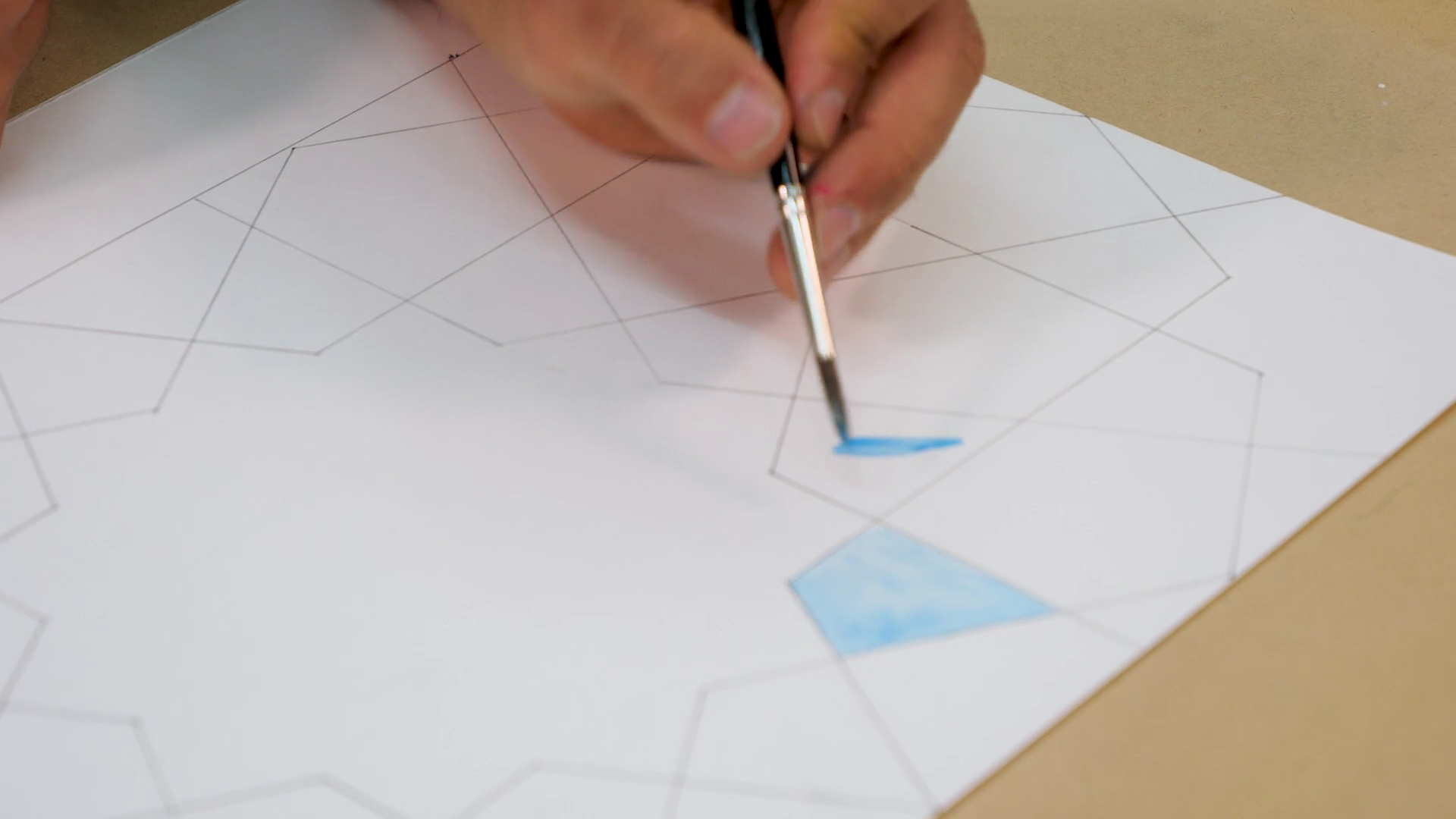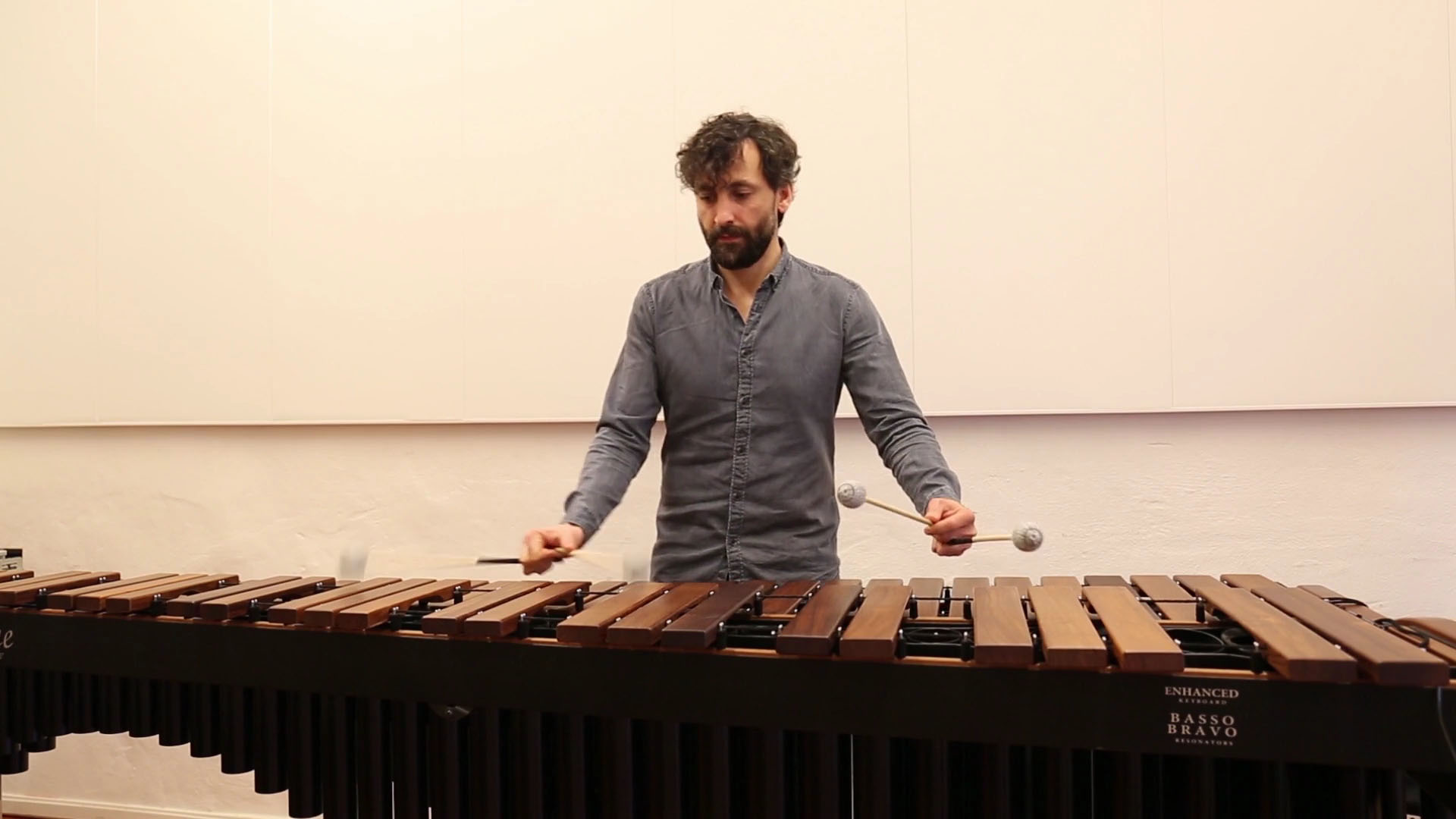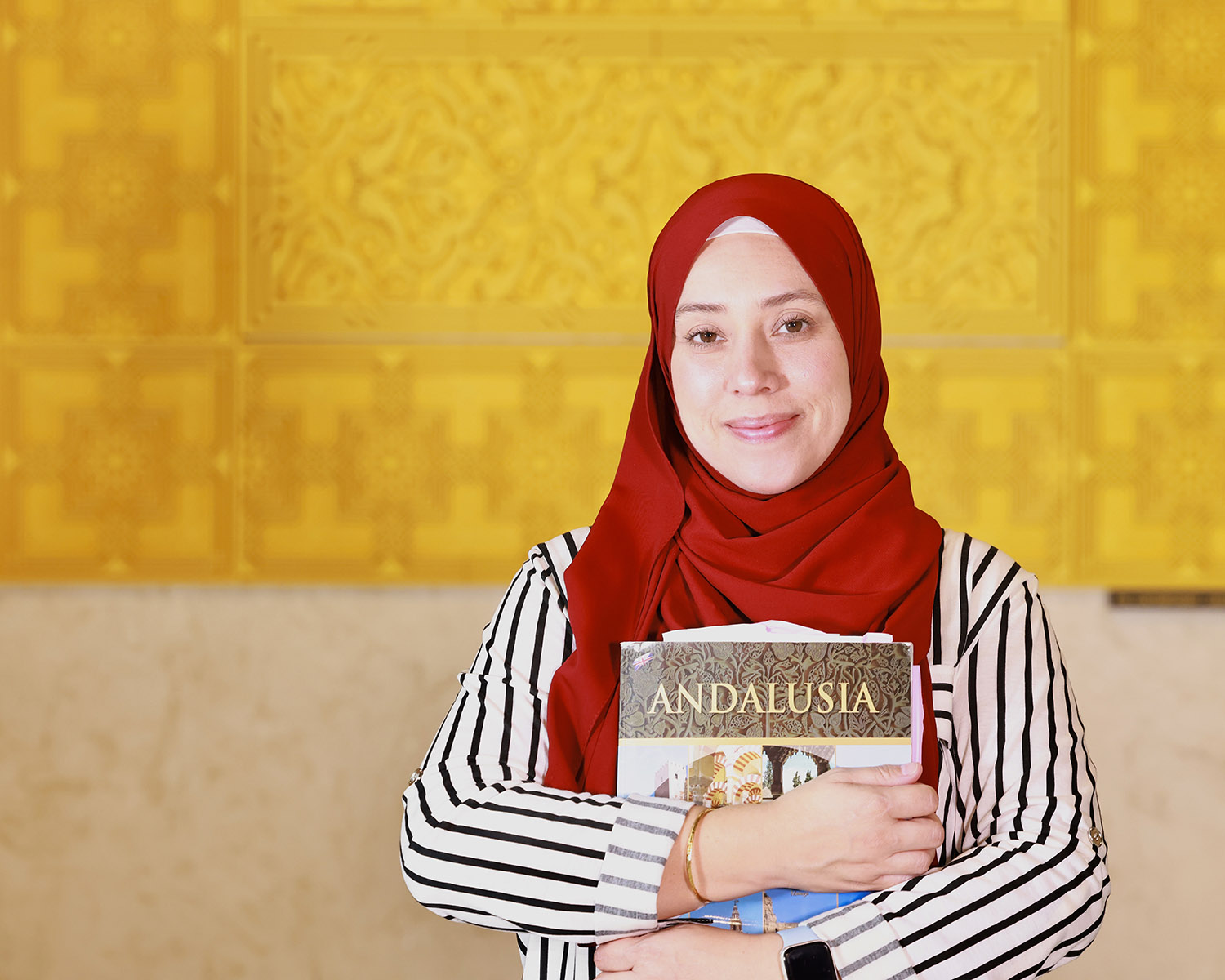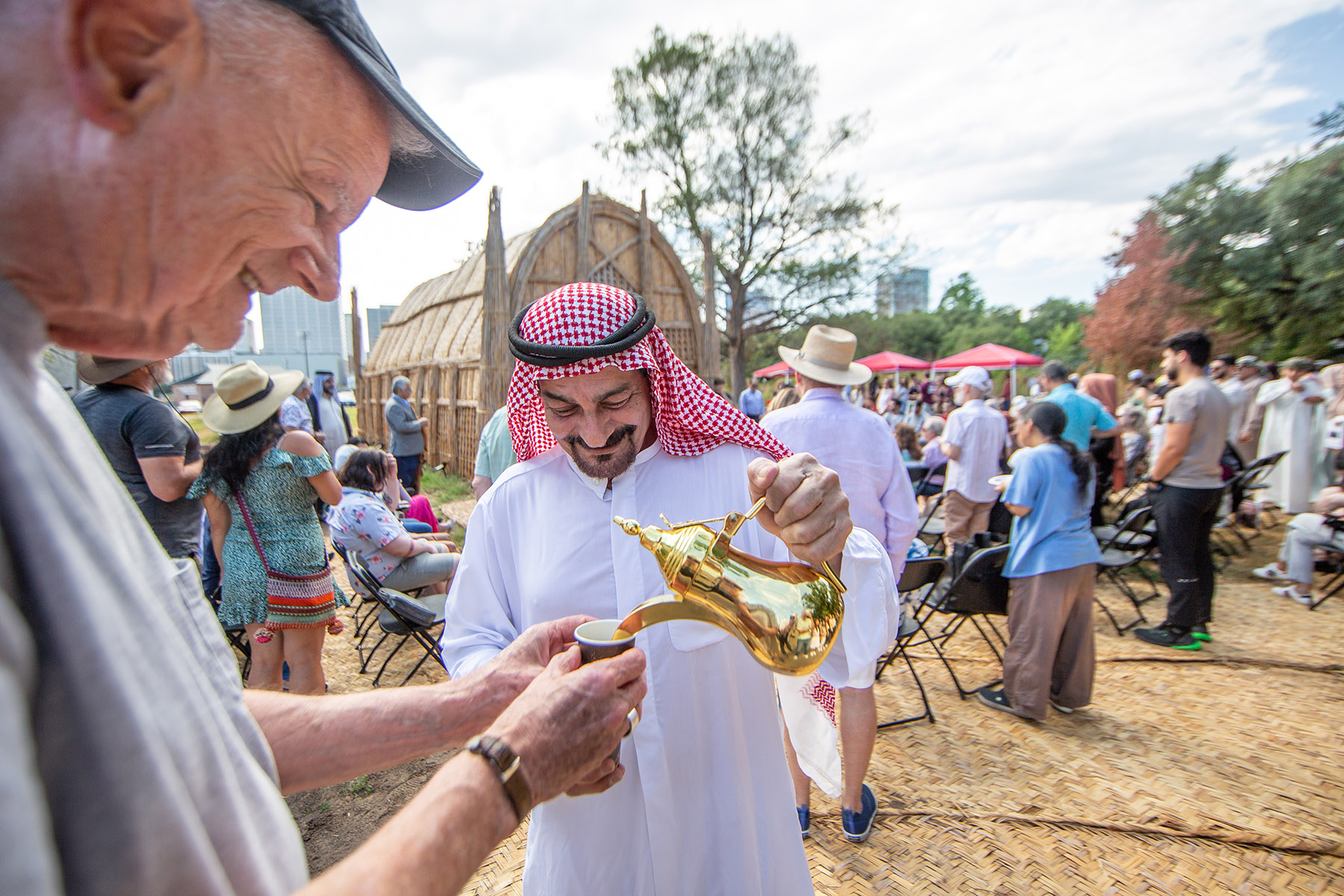
Featured
A Life of Words: A Conversation With Zahran Alqasmi

Flavors
Flavors: Chocolate Date Torte
- Food
- Arts
- Recipe
This see-through date is also known as “the translucent;” in Arabic, noor means light. Not long ago, at a long, lazy lunch, I enjoyed delicious North African—inspired date and prune torte enrobed in smooth chocolate, not unlike this one.
Learn more
Moroccan Photographer Explores Oasis Culture at Sharjah Biennial
Arts
Moroccan photographer M’hammed Kilito explores richness of oasis culture at Sharjah Biennial
Sea Beans With Fava Beans and Dill
Food
This recipe serves up one of London-based food writer Sally Butcher's favorite lunches—a perfect mezze dish of beans.
A Reimagined Islamic Garden
Arts
The second Islamic Arts Biennale (Jan 24-May 25, 2025) in Jeddah explores multicultural expressions of faith, healing, regeneration and an appreciation of beauty.
Nakshi Kantha: Tradition and Identity in Every Stitch
Arts
History
A traditional form of quilting in Bangladesh in which women embroider family history, love and memory into the fabric is blanketing markets locally and beyond.
Arab Immigration and the French Art Scene
Arts
While France is rediscovering its relationship with Arab artists of the 20th century, the latest generation of French Arab contributors to the country’s world-class art scene is exploring their own sense of identity.
Cracked Wheat and Tomato Kibbeh Recipe
Food
Simply cooked line-caught fish with this beautiful tomato kibbeh. I don't know how you could top it.
A Life of Words: A Conversation With Zahran Alqasmi
Arts
For as long as poet and novelist Zahran Alqasmi can remember, his life in Mas, an Omani village about 170 kilometers south of the capital of Muscat, in the northern wilayat (province) of Dima Wattayeen, books permeated every part of his world. “I was raised in a family passionate about prose literature and poetry,” Alqasmi recalls.
Soaring Perspective on the Global Food Chain
Food
In his latest book, Feed the Planet, photographer George Steinmetz visits nearly every corner of the world to record diverse yet linked aspects of the global food chain—including aquaculture.
Centuries-Old Scent of Oud Now Perfuming East and West
Science & Nature
Musky and sweet, oud wafted its way into the culture of the Arabian Gulf from South and East Asia. Now the resin that is processed into an essential oil is sweetening perfume and room fragrance in the West.
Featured Videos
How to make an anthotype
- Arts
- Science & Nature
In this video, photographer Rebecca Marshall teaches you how to make your own anthotype.
Anthotypes are unique impressions made with nature's own photosenstive pigments from petals, berries and in this case, fig leaves.
Discover the story "Can Fig Trees Help us Adapt to a Changing Climate?" here.
Video by Rebecca Marshall
See more


Art of Islamic Patterns: A Moorish Star Part 2 - Pattern Expand and Color
- Arts
For our next journey into the art of Islamic patterns, we visit Marrakesh, Morocco, where we find a stunning carved stucco design on a wall in the Qasr al-Bahiyah. The design is framed within a niche topped by muqarnas, the characteristic stalactite-like forms that often articulate the transition from a wall to a dome, a vault or, as in this beautiful example, the upper span of an interior niche. Although woven strapwork and vegetal motifs embellish the star pattern, in this installment in this series we focus only on the underlying geometric scheme: a classic arrangement of 12-pointed stars with equilateral triangles between them.
Read the full story here. 
Percussionist Elias Aboud - Berlin Cultural Jam
- Arts
Syria-born percussionist Elias Aboud completed his musical education at Berlin’s Barenboim-Said Akademie in 2013 and formed the Ramal Ensemble with three fellow Syrian musicians in Berlin. They not only play traditional pieces, he says, but also compose “works that bring the sophisticated polyrhythmic sound of Arab music to Western chamber ensembles, experimenting with classic tunes from both traditions.”
A musical wave has been swelling for a decade in the German capital, which one local analyst now calls “the city of choice for a new generation of cultural talent from the Middle East and North Africa”—part of the greater demographic shift that has made people of Arab backgrounds Berlin’s fourth-largest ethnic-identity group. In street jams, clubs, studios, concert halls and online, new mixes of musicians are blending notes and ideas into genre-bending, transcultural fusions.
Sepak Takraw's Kick in Minnesota
- Arts
Video by Jenn and Tim Gruber
Take the Malay word for kick and pair it with the Thai word for a hollow, woven ball and you have sepak takraw, the name of the acrobatic, lightning-fast Southeast Asian sport in which players use feet, legs, chest and head—no hands—to power a ball over a badminton-style net. (Think “kick volleyball.”) It’s been played across the region for more than three centuries, and recent decades have brought international agreements on rules that have led in turn to local and national leagues, tournaments in schools and capitals—all pushing sepak takraw onto an increasingly global sports stage from Malaysia to Minnesota. With more than two dozen countries now fielding national teams, the sport’s leading promoters have set their eyes on the Olympics.
Newsletter
Sign up and discover even more!


.jpg?cx=0.5&cy=0.5)
Sign up for our weekly newsletter and you will receive the latest features, videos, events, reviews, teaching aids and digital-only content.


.jpg?cx=0.5&cy=0.5)